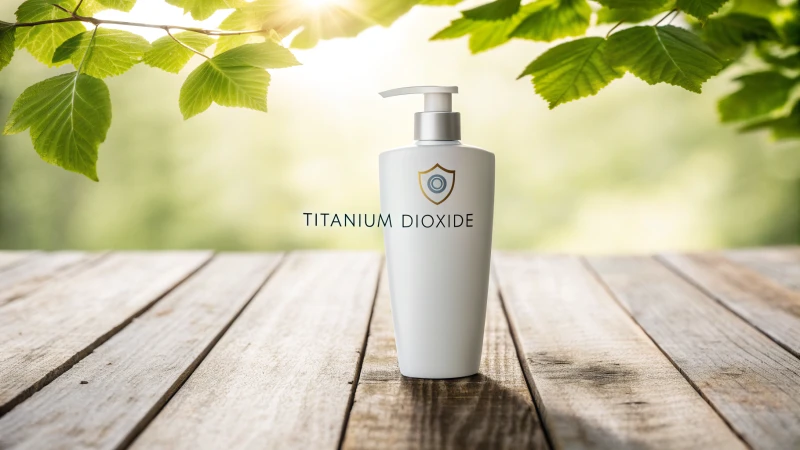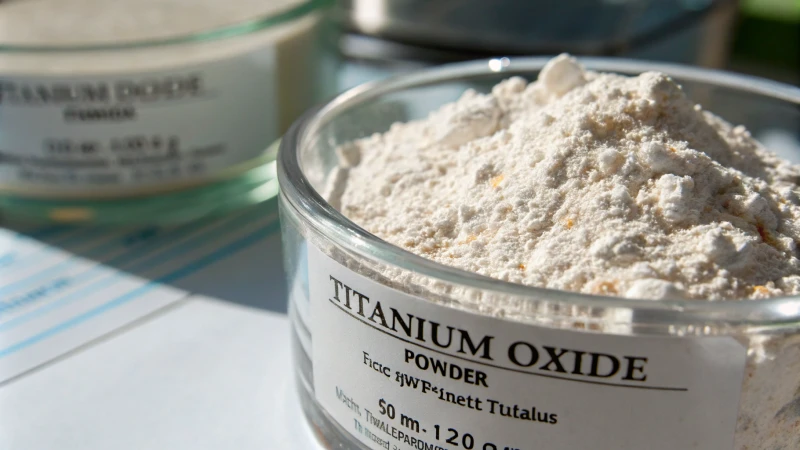
Titanium dioxide works like magic in many everyday items. This substance is really important. People use it in lots of products. It’s probably an unsung hero.
I always choose the correct mixture of titanium dioxide for each task. It might be for cosmetics, food or industrial purposes. Very important instructions from the manufacturer guide my actions. Safety and effectiveness are important.
Using titanium dioxide may seem simple. However, each use has unique details and best methods. Exploring these details is very helpful. It truly helps to get the most benefits. Here are some expert tips and personal insights on using TiO2 in different industries.
[claim claim=”Titanium dioxide is used in sunscreen for UV protection.” istrue=”true” explanation=”TiO2 reflects and scatters UV rays, protecting skin from sun damage.”]
[claim claim=”Titanium dioxide is edible and used in food coloring.” istrue=”true” explanation=”TiO2 is approved as a food additive, enhancing whiteness in products.”]
How Does Titanium Dioxide Enhance Sunscreen Effectiveness?
Have you ever thought about why titanium dioxide is so popular in sunscreens? This mineral is a champion for shielding the skin from the sun. Let’s explore why people rely on it for sun safety.
Titanium dioxide in sunscreen is very effective. It physically blocks UV rays. It reflects and scatters these rays away from the skin. This mineral forms a shield. It offers protection from a wide range of UV rays. Sensitive skin benefits from its gentle nature. It is perfect for sensitive skin.
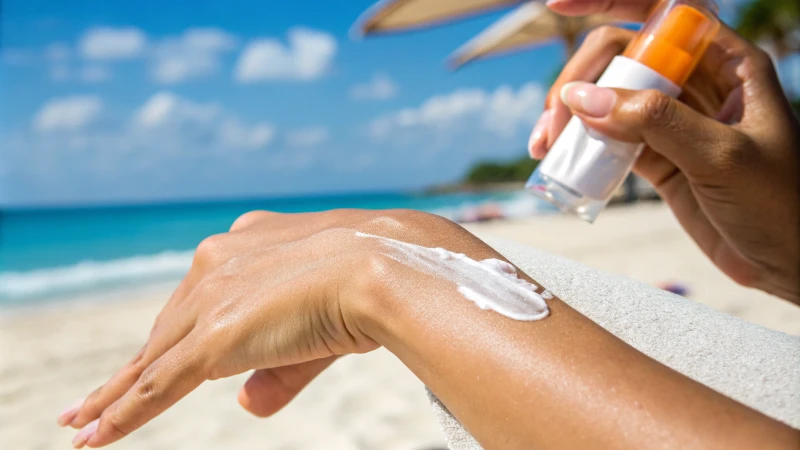
Simple Science: Titanium Dioxide
The day I realized the magic of titanium dioxide, I was on a sunny beach. I applied sunscreen and wondered how it protected my skin from the sun. Titanium dioxide (TiO2) is a mineral from nature. It acts like a personal shield against the sun’s ultraviolet (UV) rays. It reflects and scatters these harmful rays, providing broad-spectrum protection against both UVA and UVB rays. Unlike chemical sunscreens that absorb UV radiation, TiO2 stays on the skin’s surface and works right away.
| Benefits of Titanium Dioxide in Sunscreens |
|---|
| Looks natural without a white layer |
Thinking About Safety and Effectiveness
I understand. Anything on your skin might cause safety worries. Some people talk about tiny particles in titanium dioxide going into the skin. The good news is that studies show these particles remain on the skin’s surface when in sunscreen formulations1. So, they guard you without getting into your system. Enjoy the sun without worry.
Comparing to Chemical Sunscreens
Chemical sunscreens might sting or cause breakouts; you’re not alone if you’ve experienced this. Chemical sunscreens use ingredients like oxybenzone or avobenzone to absorb UV rays. In contrast, titanium dioxide acts as a barrier, physically blocking these rays, making it particularly beneficial for sensitive skin by causing fewer irritations or allergies.
Tips for the Best Application
Using titanium dioxide sunscreen correctly gives the best protection:
- Cover every part of exposed skin like you paint a picture.
- Reapply every two hours or after swimming or sweating.
- Let it settle on your skin for maybe 15 minutes before you go outside to form a protective layer.
- Apply evenly to avoid missed spots and reduce sunburn risk.
Application techniques2 really help ensure even coverage reduces risks associated with uneven tanning.
Role in Sunscreen Products
Titanium dioxide does more than block UV rays; it improves the look of sunscreens:
- Provides opacity and brightness, helping products blend well into various skin tones without leaving a chalky residue.
- Its inert nature means it doesn’t react with other ingredients, maintaining formulation stability over time.
Choosing the right sunscreen for your skin type and lifestyle is crucial. Dermatologists suggest combining it with skincare full of antioxidants for extra sun protection benefits.
[claim claim=”Titanium dioxide provides broad-spectrum UV protection.” istrue=”true” explanation=”TiO2 reflects and scatters both UVA and UVB rays, offering broad protection.”]
[claim claim=”TiO2 in sunscreens can be absorbed into the bloodstream.” istrue=”false” explanation=”Studies show TiO2 particles remain on the skin’s surface without systemic absorption.”]
What Role Does Titanium Dioxide Play in Food Products?
Have you ever thought about why your favorite candy has such an irresistible, bright color? Titanium dioxide might be the secret ingredient.
Titanium dioxide is a whitening agent in food. It brightens the look of things like candy and icing. Authorities control its amount in food to keep it safe for people. However, its safety is still a topic people discuss widely.
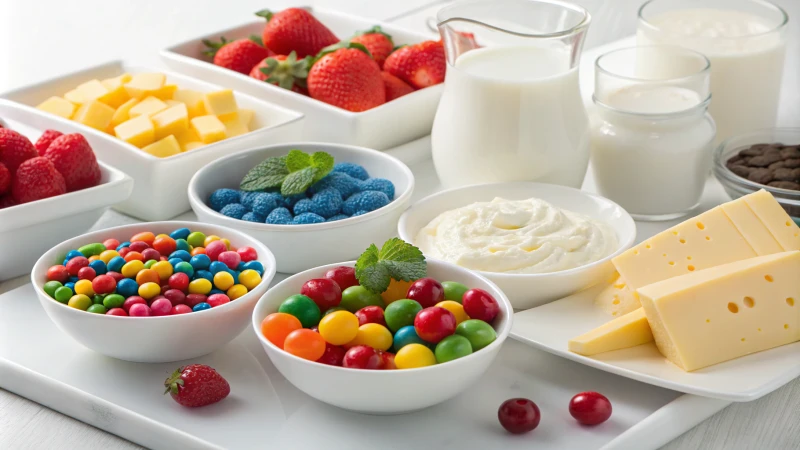
The Purpose of Titanium Dioxide in Food
I once wondered why the frosting on my birthday cake appeared so perfectly white. Titanium dioxide3 likely played a role in that. This ingredient is used widely to achieve bright white colors in foods like candies, icings, and powdered donuts. It’s interesting how even the color of food can affect what we decide to buy. We often eat first with our eyes.
| Food Product | Role of Titanium Dioxide |
|---|---|
| Candy | Brightens colors |
| Icing | Enhances whiteness |
| Powdered donuts | Provides uniform coating |
Regulatory Standards and Health Concerns
At a family dinner, I joined a lengthy chat about food safety. Titanium dioxide became the main topic, and I realized my lack of knowledge about its regulation. Agencies like the FDA and EFSA keep its use within safe limits. Still, recent studies make me a bit careful. Some studies label it as "possibly carcinogenic." This reminds us to learn what we eat and how it might impact our health.
| Regulation Body | Permissible Limit (mg/kg) |
|---|---|
| FDA | As per good manufacturing practices |
| EFSA | 25 mg/kg |
People who prefer to be cautious should read labels carefully. Exploring other options could be a smart move.
Foods Commonly Containing Titanium Dioxide
It’s surprising where titanium dioxide might show up in our food. I’ve discovered it in some of my favorite sweets and dairy products. If you, like me, want to know what you’re eating, you should find out which foods include this additive.
- Candies: Often used for enhancing color
- Dairy Products: Adds whiteness to certain cheeses
- Baked Goods: Used in icings and toppings
If you are interested in learning more about which foods contain titanium dioxide and their potential alternatives4, exploring lists and databases can be helpful.
Understanding these aspects aids us in navigating our food choices better. We can make smart decisions about what goes into our bodies.
[claim claim=”Titanium dioxide is used to enhance food flavor.” istrue=”false” explanation=”Titanium dioxide is used for color enhancement, not flavor.”]
[claim claim=”FDA regulates titanium dioxide in food products.” istrue=”true” explanation=”The FDA sets guidelines to ensure safe consumption levels.”]
Why is Titanium Dioxide Essential in Paint Manufacturing?
Do you ever think about why paint looks so bright and lasts a long time?
Titanium dioxide is crucial in paint manufacturing. It provides excellent opacity and brightness. This element offers unique properties. Paint becomes very durable with it. It is a vital component. Titanium dioxide helps in achieving vibrant finishes. Paints last longer with its use.
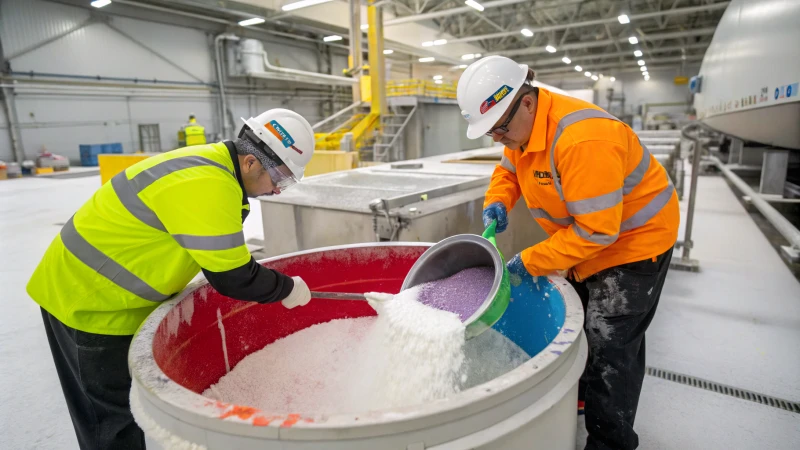
The Role of Titanium Dioxide in Paints
When I began learning about paint manufacturing, I found it fascinating. Something as simple as paint holds an exciting story. Titanium dioxide or TiO2 is like the hidden hero in this story. It is the secret ingredient that gives paint its bright colors and clear finish. Its exceptional opacity5 and whiteness make colors stand out vividly, much like a sunset over the Bosphorus that is really stunning.
Improving Durability
I remember seeing paint survive a harsh winter without losing its shine. This showed me how important TiO2 is for paint’s strength. It acts like a protector, guarding surfaces against UV rays, moisture, and dirt. This role is very important for outdoor use6, where the weather is unforgiving.
Cost Efficiency
Using titanium dioxide might seem expensive at first. However, it is a wise choice. It improves coverage, needing fewer coats, which saves on materials and labor over time. This efficiency is a relief for any manufacturer7 trying to balance quality with budget.
| Benefits of TiO2 in Paint | Impact |
|---|---|
| Opacity and Brightness | Vibrant Colors |
| UV and Environmental Resistance | Long-lasting Finish |
| Coverage Efficiency | Cost Savings |
Environmental Considerations
I learned that while TiO2 is fantastic, it comes with responsibility. Industry experts work hard to refine production processes by reducing emissions and waste, making sustainable practices an ongoing focus for industry leaders8. Sustainable practices are critical for our future, not just trendy words.
Considering Alternatives
I often think about alternatives to TiO2, wondering if any could match all its benefits. Research continues but finding substitutes that solve environmental issues without losing quality is challenging.
In summary, titanium dioxide remains essential in making modern paint due to its unparalleled ability to enhance both visual appeal and functional properties of paint. However, understanding its full impact involves examining economic and environmental perspectives closely intertwined with its usage.
[claim claim=”Titanium dioxide is the primary pigment in paints.” istrue=”true” explanation=”TiO2 is essential for opacity and brightness in paint.”]
[claim claim=”Alternatives to TiO2 match its benefits in paints.” istrue=”false” explanation=”No alternatives match TiO2’s comprehensive benefits yet.”]
Are There Any Safety Concerns When Using Titanium Dioxide?
Have you ever thought about how safe titanium dioxide is? This ingredient shows up in many products. You find it in sunscreen. You see it in candy too.
Titanium dioxide is usually safe in cosmetics and food. Concerns still exist about breathing in its tiny particles. There are potential cancer risks from eating large amounts.
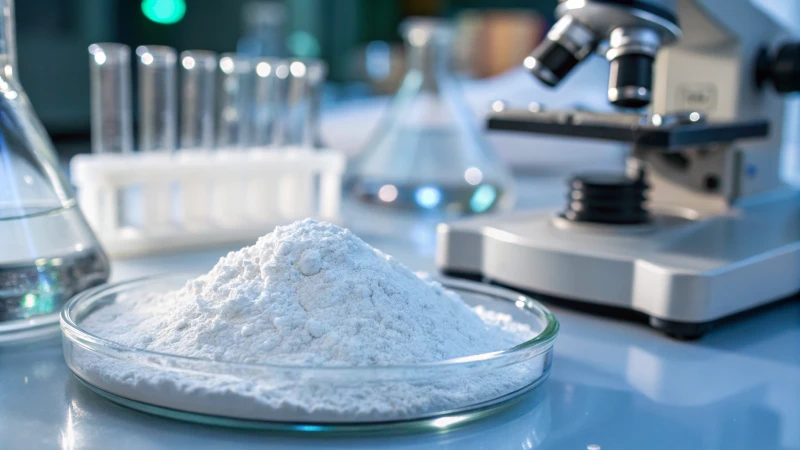
Understanding Titanium Dioxide’s Applications
Titanium dioxide amazes me with its many uses. On sunny days, I apply sunscreen, which contains this compound to protect my skin from harmful UV rays. It’s in my foundation too. It gives me a smooth, even look and stays on the surface without sinking in. In cosmetic products9, titanium dioxide acts as a protective barrier. It is generally considered safe.
In the food industry, ever eat bright candy or a creamy treat? Titanium dioxide is the whitening agent that makes treats look nice. Regulatory agencies like the FDA consider it safe for consumption in small amounts. Moderation is important, just like with everything in life.
Health Concerns Surrounding Titanium Dioxide
I read articles that made me doubt titanium dioxide’s safety. The problem is the tiny nanoparticles. They are small enough to breathe in and might cause lung problems over time. If you often work with these particles, following safety rules is really important.
Regarding ingestion, the European Food Safety Authority (EFSA) talks about genotoxicity risks with large amounts. Thus, the use of titanium dioxide in food is under reevaluation in some regions.
| Application | Safety Status |
|---|---|
| Cosmetics | Generally safe for topical use |
| Food | Safe in small quantities |
| Industrial Use | Caution advised for inhalation |
Regulatory Stances on Titanium Dioxide
Regions view titanium dioxide differently. I was surprised that the European Union10 banned it as a food additive due to safety concerns. This is very different from other areas where it is allowed with strict rules.
Staying informed is really important. I find it useful to read the latest research and updates from regulatory bodies. Picking trustworthy brands that meet safety standards brings peace of mind. Knowing more empowers us to care for our health and safety.
[claim claim=”Titanium dioxide in cosmetics is unsafe for topical use.” istrue=”false” explanation=”Titanium dioxide is generally safe for topical use, not penetrating deeply.”]
[claim claim=”Inhalation of titanium dioxide nanoparticles can cause respiratory issues.” istrue=”true” explanation=”Prolonged exposure to inhaled nanoparticles may lead to respiratory problems.”]
Conclusion
Titanium dioxide is a versatile compound used in cosmetics, food, and paints for UV protection, whitening, and durability. Its safety varies by application and regulatory standards.
-
Clarifies safety concerns about nanoparticles in sunscreen formulations. ↩
-
Provides tips on how to effectively apply sunscreen for maximum protection. ↩
-
Clicking this link provides detailed insights into why titanium dioxide is added to food, enhancing your understanding of its role. ↩
-
This link offers a comprehensive list of foods with titanium dioxide, helping you identify products to consume or avoid. ↩
-
Explore how titanium dioxide provides opacity, enhancing paint’s visual appeal and coverage. ↩
-
Discover how TiO2 shields paints from UV damage, extending their lifespan. ↩
-
Learn about the economic advantages of using TiO2 in paint production. ↩
-
Understand how industry leaders are reducing the environmental impact of TiO2 production. ↩
-
This link explains how titanium dioxide is safely used in cosmetics, addressing common concerns about skin absorption. ↩
-
Learn about the EU’s stance on titanium dioxide in food products and why they have updated their regulations. ↩




